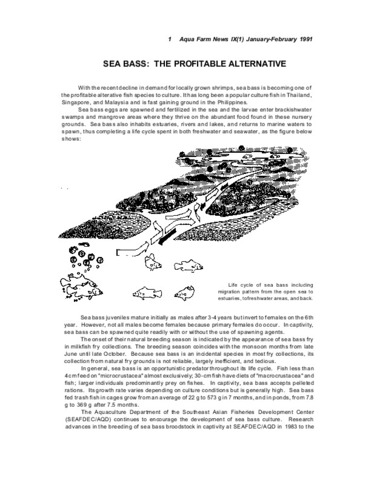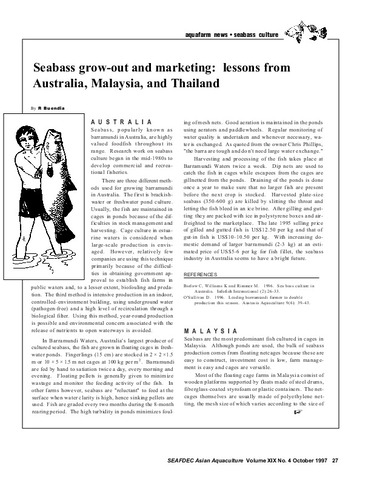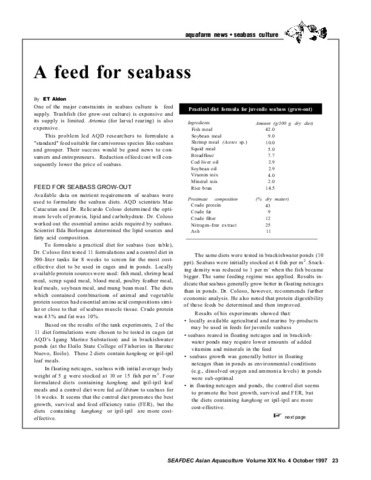Plasma osmolality and chloride regulation in the sea bass Lates calcarifer
- Global styles
- MLA
- Vancouver
- Elsevier - Harvard
- APA
- Help

View/
Date
1996Author
Page views
1,670ASFA keyword
AGROVOC keyword
Taxonomic term
Metadata
Perlihat publikasi penuh
Share
Abstract
Seawater-adapted sea bass (Lates calcarifer) subadults and fingerlings were abruptly transferred to fresh water and freshwater-adapted subadults and fingerlings to sea water. To follow the responses of plasma osmolality and chloride concentration, blood samples were taken before and at intervals after transfer. Changes in plasma osmolality and chloride showed a pattern of initial crisis when osmolality and chloride levels deviated significantly from pre-transfer levels. The initial crisis was followed by a regulatory phase when these values returned to almost pre-transfer levels. Subadults transferred to fresh water had a regulatory phase (or the ability to return plasma osmolality and chloride to near normal levels) starting at Day 4 after transfer while fingerlings transferred to fresh water had a much earlier regulatory phase, starting at Day 1. Subadults transferred to sea water had stable plasma osmolality and chloride levels at Day 2 while fingerlings transferred to sea water regulatory phase commencing at Day 1.
Suggested Citation
Almendras, J. M. E. (1996). Plasma osmolality and chloride regulation in the sea bass Lates calcarifer. The Israeli Journal of Aquaculture-Bamidgeh , 48(1), 28-34. http://hdl.handle.net/10862/1549
Type
ArticleISSN
0792-156XKoleksi
- Journal Articles [1256]
Related items
Showing items related by title, author, creator and subject.
-
Sea bass: The profitable alternative
Southeast Asian Fisheries Development Center, Aquaculture Department (Aquaculture Department, Southeast Asian Fisheries Development Center, 1991) -
Seabass grow-out and marketing: lessons from Australia, Malaysia, and Thailand
Buendia, Romeo (Aquaculture Department, Southeast Asian Fisheries Development Center, 1997) -
A feed for seabass
Aldon, E. T. (Aquaculture Department, Southeast Asian Fisheries Development Center, 1997)One of the major constraints in seabass (Lates calcarifer) culture is feed supply. Details are given of work conducted at AQD regarding the formulation of a 'standard' feed suitable for carnivorous species like the seabass ...





